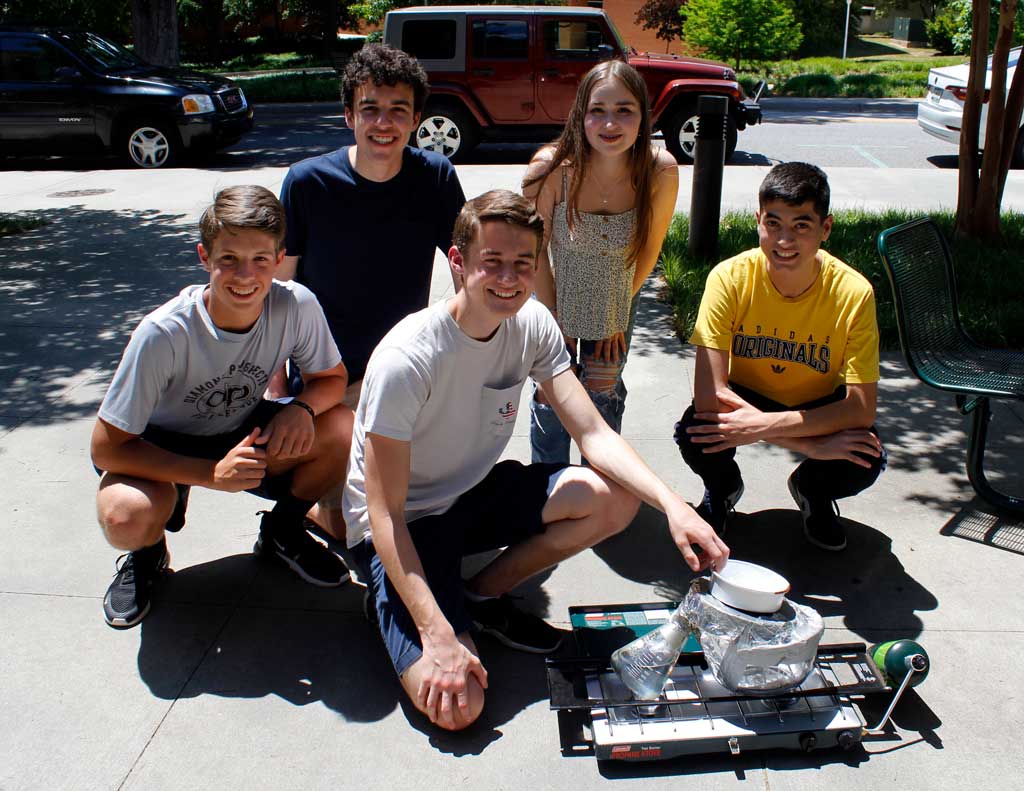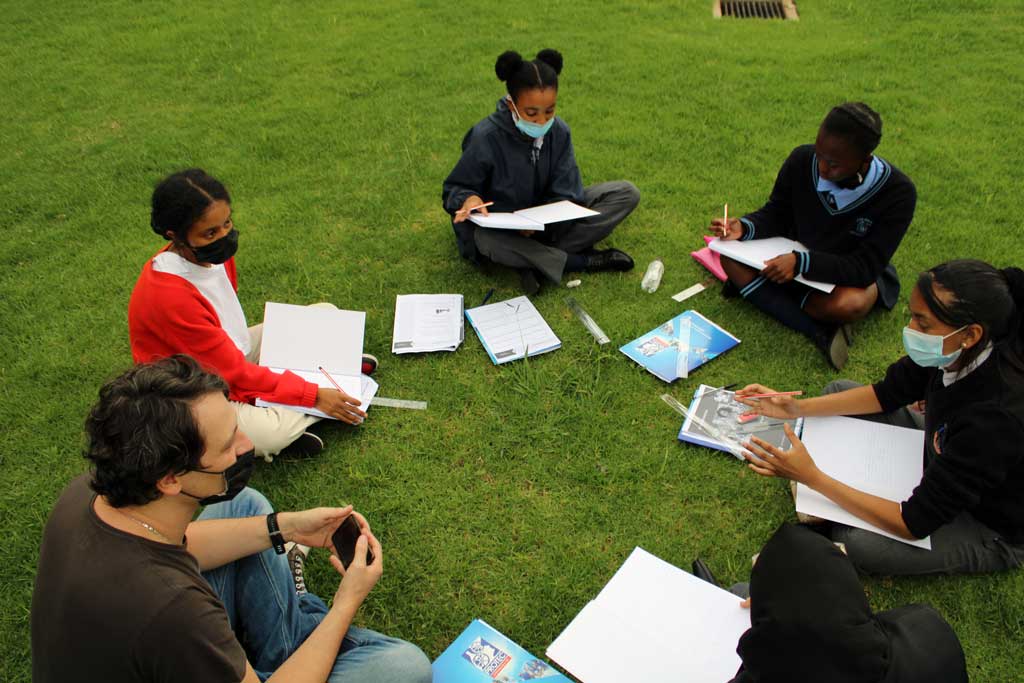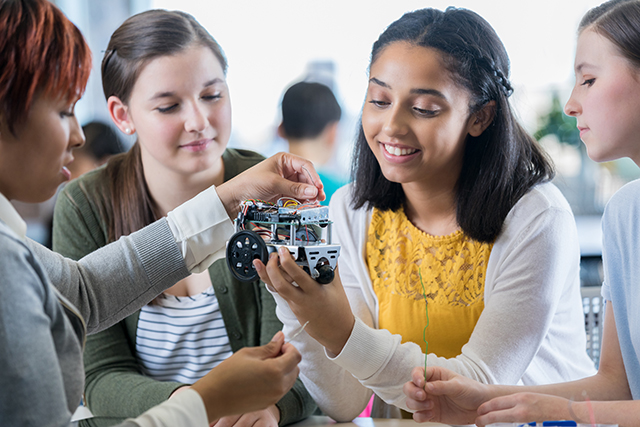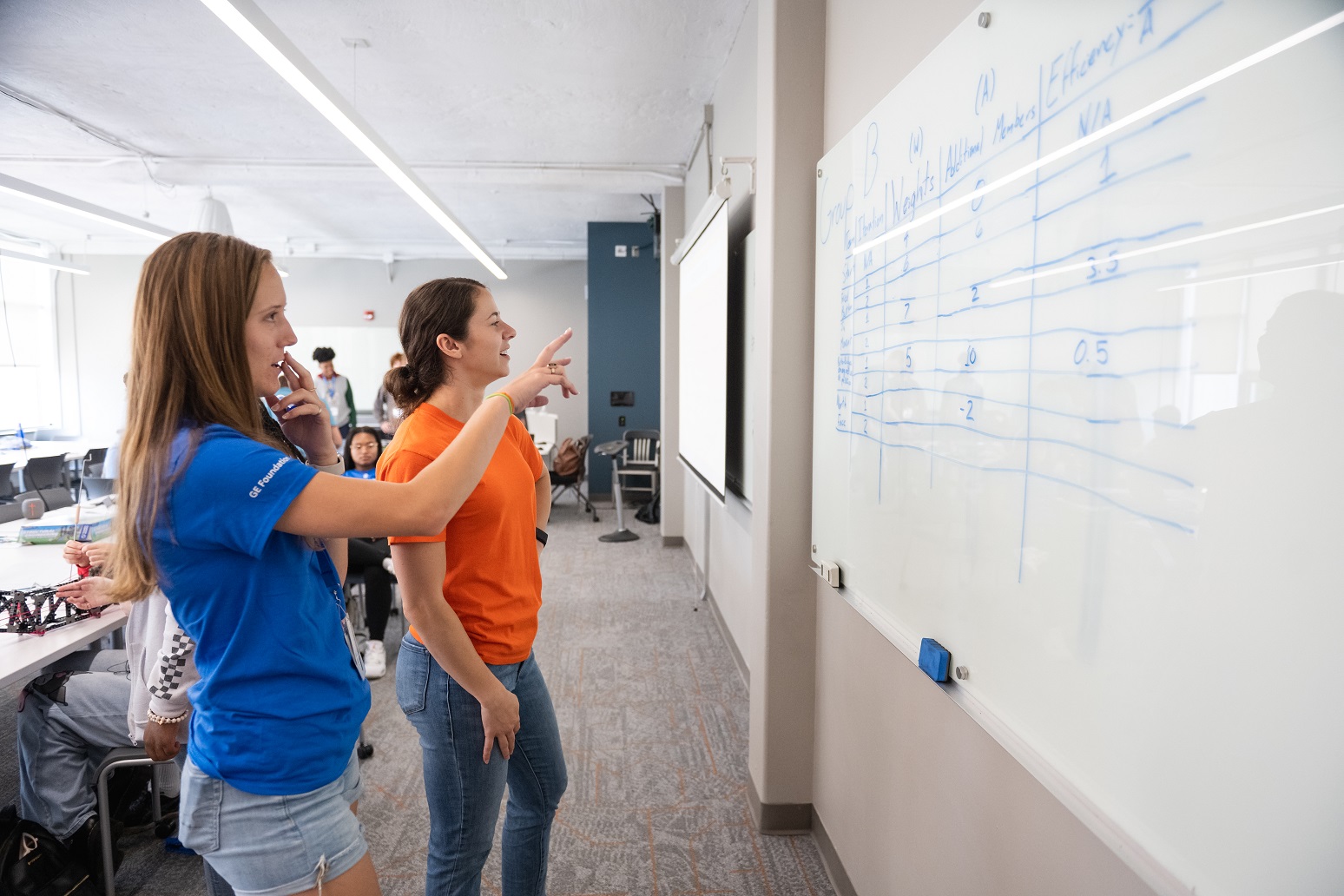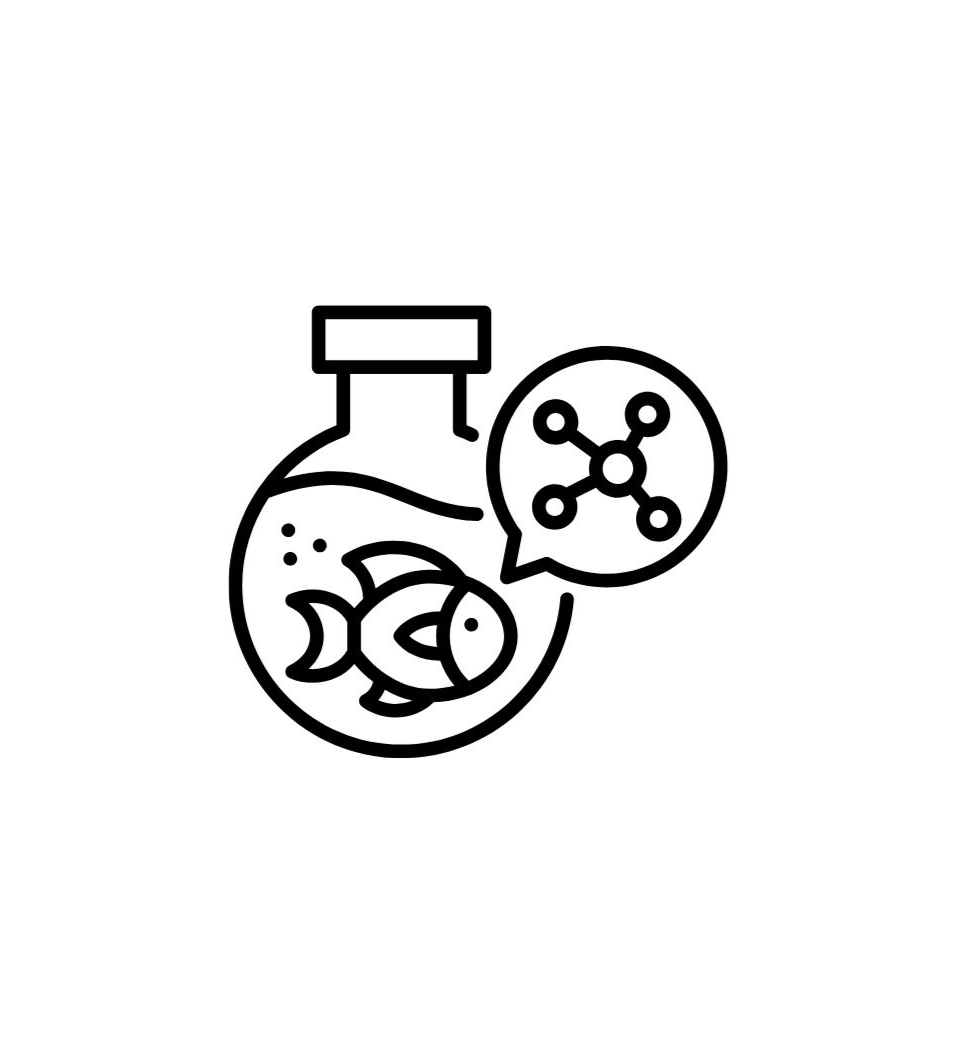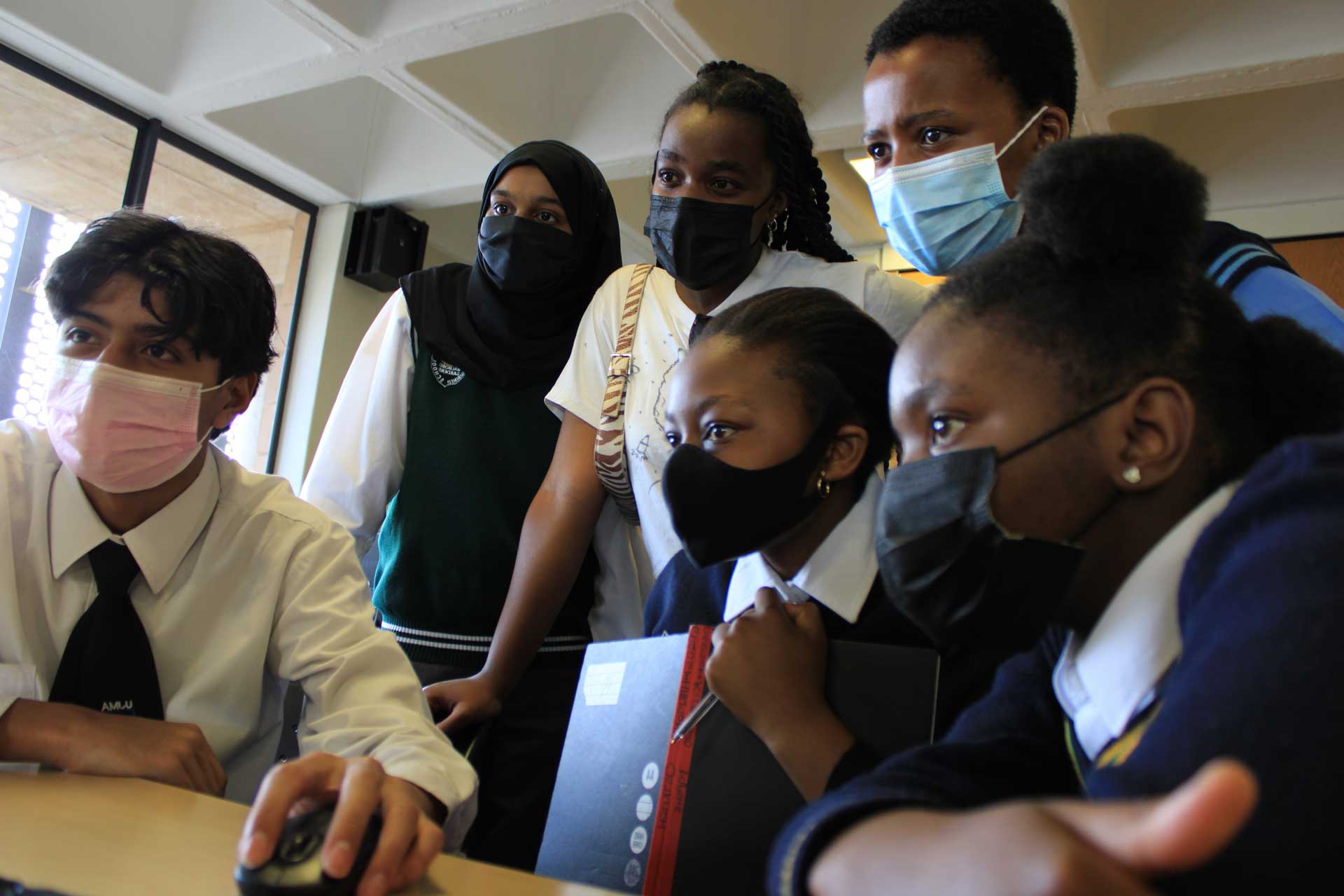

| Ages | Cost | Time |
|---|---|---|
| 14+ | Medium | About 60 minutes |
Do you like listening to music and talking to your friends? These activities involve you listening to sounds. But what really is sound, and what does it look like?
In this Experiment & Explore activity, you will discover what sound is by looking at its effects. You will also experiment with its properties, explore the patterns that different kinds of sounds make, and discover how engineers might use this to solve real-world problems.
Make sure that your plastic container is big enough to be able to fit your speaker inside without it touching the sides or top.
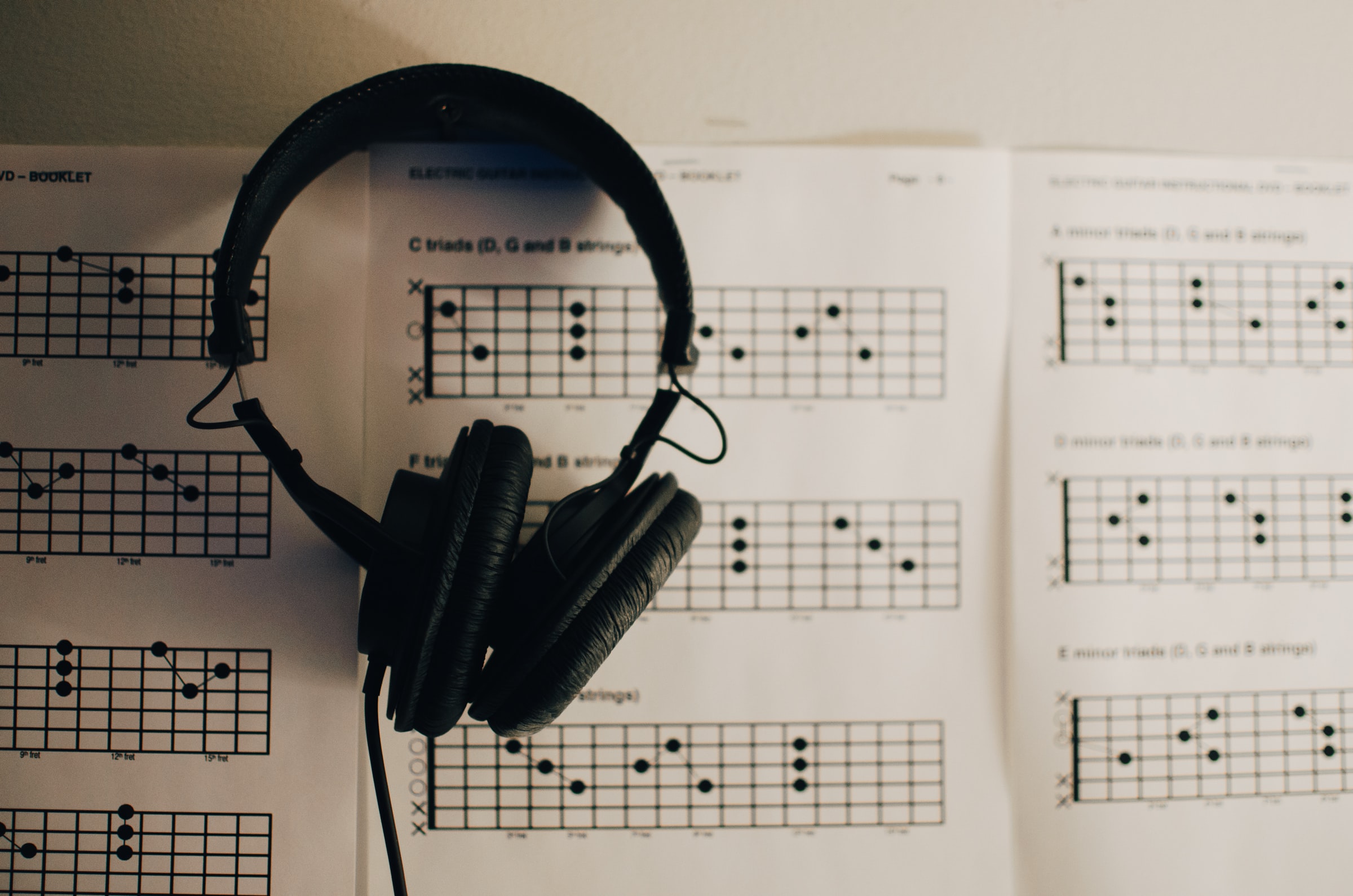
A tone generator is a device that can produce a pure sound at a particular volume and pitch. Most sounds we hear are actually many sounds of many volumes and pitches. A ‘pure’ sound is a sound of only one pitch or frequency.
- If you have a suitably sized drum already, you can skip to step 7.
- If you don’t have a drum, you will need to make one. Use the craft knife to cut the bottom of your plastic container off to create a cylindrical shape with two open ends. Try to cut the bottom off as straight as possible so that the cylinder sits level on a table.
- Cut out a circular piece of the plastic sheeting a few centimeters or inches larger in diameter than the top of your cylinder.
- Tape one edge of the plastic sheeting to the side of your cylinder.
- Stretch the plastic sheeting tightly over the top of your cylinder and tape the opposite edge to the side of the cylinder.
- Work your way around the cylinder, stretching and taping the piece of plastic sheeting to the cylinder. You need to stretch the plastic sheeting as tightly and evenly as possible without tearing it.
- To keep things from getting too messy later, make a collar for the top of your drum. Cut out a few 5 cm (2 in) wide strips from your piece of cardboard and stick these end-to-end. Wrap this around the top of your ‘drum’ and fasten the ends with some tape.
- Now we can start experimenting. What do you think will happen if you tap the top of your drum with your finger? Try it. What happens? Is this what you expected? What do you think makes the sound that you hear?
- Now lift your drum up, holding your finger lightly on the plastic sheeting. What do you think you will feel if you shout into the bottom of the drum? Do this. What do you feel? What do you think is causing these vibrations? What happens if you shout louder or softer? What happens if you shout at a higher or lower pitch?
- Place your drum on a table and sprinkle some sand, salt, or couscous onto the top. What do you think will happen if you sing a single note near the top of the drum? Do this and see if what you observe matches your predictions. What happens if you sing louder or softer? What happens if you sing lower or higher notes?
- Connect your speaker to your mobile phone and place it inside your drum. Open the tone generator app. A tone generator produces a ‘pure’ sound or tone of a single defined pitch and volume. Set the frequency (or pitch) to 200 Hz. Set the amplitude (or volume) quite low. Play the sound. What do you see happening to the salt/sand/couscous?
- What do you think will happen if you increase the amplitude (volume) of the sound? Try it. What do you observe? Why do you think this happens?
- A drum with a diameter of between about 20 cm and 40 cm (8 in and 16 in)
- If you don’t have a drum, you can make one using:
- An old round plastic container with a diameter between 20 cm and 40 cm (8 in and 16 in). This could be a plastic paint container
- Some plastic sheeting) large enough to cover the opening of the container. You can use a heavy-duty garbage or rubbish bag
- A craft knife
- Scissors
- An old cardboard box like a breakfast cereal box
- Some electrical or adhesive tape
- About 125 g (4.5 oz) fine dry sand, fine salt, or couscous
- A mobile phone or computer
- A speaker (a small Bluetooth speaker would be ideal)
- A tone generator app (like the Multitone Generator app for Android or iOS. You can also search your mobile app store for ‘free tone generator’.)
What's happening
Before starting this activity, you may have already known that sound is the result of vibrations that travel through the air (or liquids and solids) to our ears as longitudinal (or pressure) waves. These waves are caused by vibrating objects. When you hit a drum, you cause the velum (the stretched material) to vibrate which makes the air particles vibrate back and forth which creates a sound wave. The same is true for instruments like guitars where the strings vibrate .
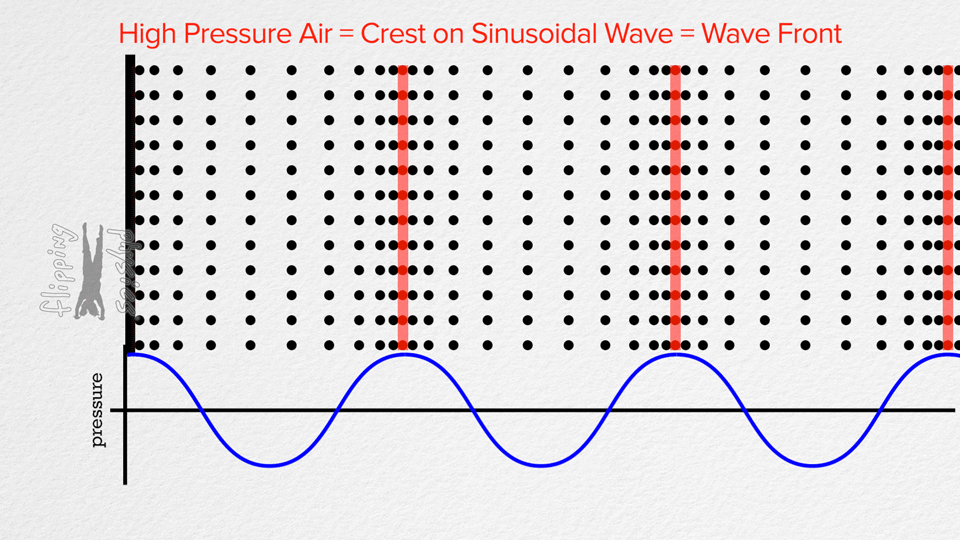
See the animated gif here.
You may have discovered that the reverse is also true - sound waves produced by you (or a speaker) cause the velum to vibrate. If you sprinkle grains of sand, salt, or couscous onto the drum, you can see these vibrations quite clearly. You can also see that sound is a form of energy transfer: it is able to make these grains move.
The sounds we hear are distinguished by their volume and their pitch, which you can see reflected in how the grains vibrate in response to different sounds. A larger amplitude (louder sound) makes the grains vibrate more vigorously. The greater the amplitude of the sound, the greater the energy it transfers.

Pitch
The ‘highness’ or ‘lowness’ of a musical note or sound is called its pitch. Birds tweet at a high pitch. Lions roar at a lower pitch.
Longitudinal Wave
A longitudinal wave is a wave where the particles vibrate back and forth in the same direction as the direction in which the wave travels. Longitudinal waves have repeating areas of high pressure (compressions) and low pressure (rarefactions).
Frequency
Frequency is a measure of how often something happens. With waves (e.g., sound waves), it is a measure of how many waves pass a fixed point per second. We experience the frequency of a sound as its pitch. We hear low frequency waves as low-pitched sounds and high frequency waves as high-pitched sounds.
Amplitude
Amplitude is a measure of the maximum distance a particle in a wave moves from its rest point. The greater the amplitude of a sound wave, the more the air particles vibrate and the louder the sound we hear.
So far, we have seen that a greater amplitude produces a louder sound and makes the grains vibrate more. But what about the frequency of the sound wave. How does it affect the grains?
A greater frequency sound wave results in a higher pitched sound. It turns out that different frequencies can make the grains vibrate in different patterns. The relationship between the frequency and the patterns produced is very complicated and is the result of standing waves. This relationship was first described by mathematician Sophie Germain.

Let's investigate these patterns in more detail.
- Place the drum over your speaker and sprinkle more grains evenly over the top. Play a tone with a frequency of 71 Hz. Set the amplitude so that the grains vibrate without flying off. What do you notice? Do grains all over the surface vibrate the same amount? Do grains in some areas not vibrate at all? Do the grains start to form a pattern? Can you draw a picture of this pattern?
- Change the frequency of the tone to 88 Hz. What do you observe happening now? Do grains vibrate and not vibrate in the same areas as before? Does a different pattern start to emerge? Can you draw a picture of this new pattern?
- Try the following frequencies – 120 Hz, 344 Hz and 787 Hz. Does every frequency form a clear and unique pattern? What sorts of patterns emerge?
- Now, starting with a frequency of 100 Hz, gradually increase the frequency to 1 700 Hz to see if you can find any other patterns. Draw pictures of any of the patterns that emerge.
- How large can you make the frequency before the pitch of the sound is too high for you to hear? Do you think this is because of your ears or the quality of the sound that the speaker can produce?

Do you think we can put our understanding of sound to practical use? Consider these possibilities.
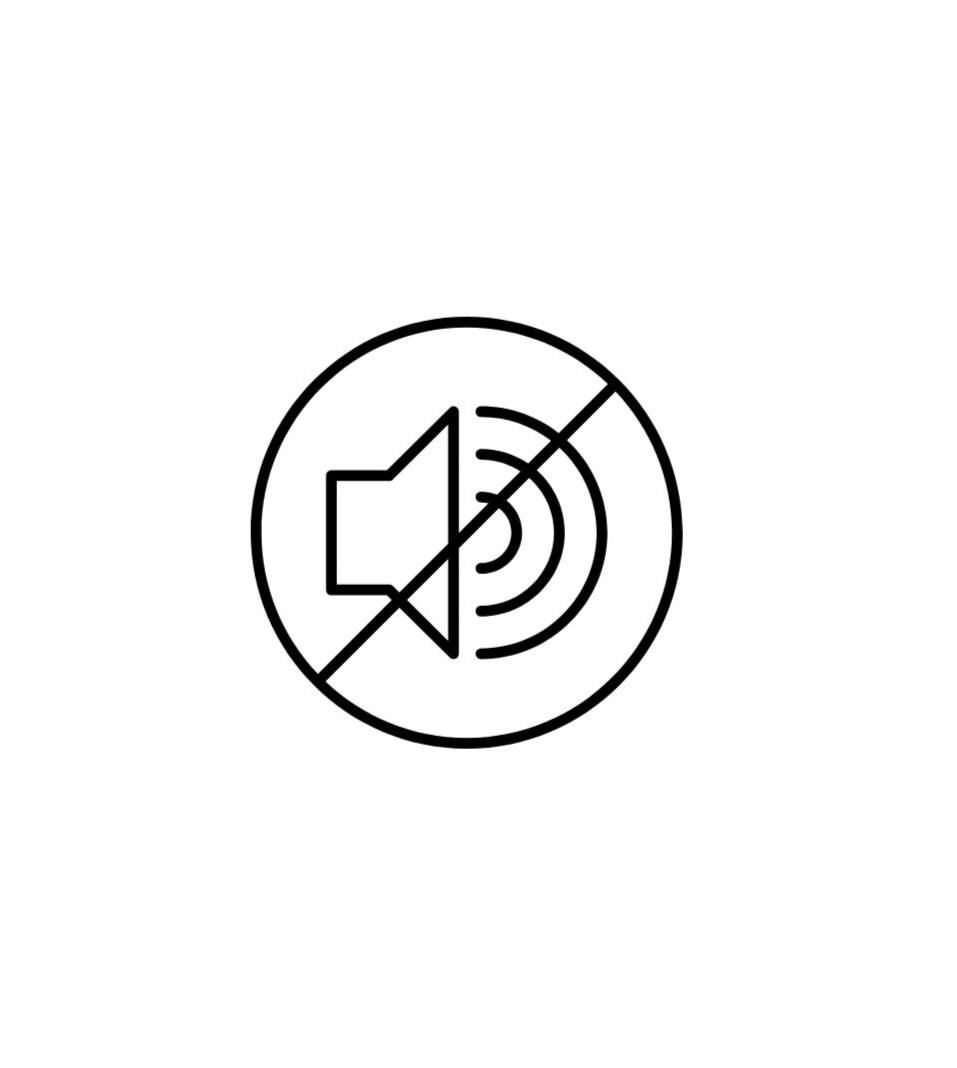
Watch these videos to learn more about standing waves and how sounds of different frequencies create different patterns.
Learn about Pitch and Loudness. Then, compare Audible Frequency Ranges.
Watch how randomly distrubuted grains fall into patterns and demonstrate 2-dimensional standing waves.
Watch as Physics Girl uses physics to create cool patterns on a vibrating plate.

